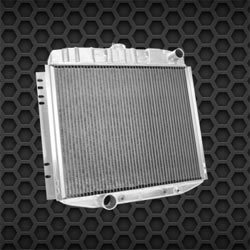The most discouraging alterations occurred under the hood. First, stricter emissions standards dictated reduced compression for all engines to accommodate low-calorie 91-octane fuel. Second, Ford and other automakers now switched from quoting horsepower in SAE gross measure to the more realistic SAE net method -- which had the unhappy effect of making the actual power losses look even worse on paper.
With this, compression on the 250 six was dropped a full point (to 8.0:1), resulting in 95 net horsepower. A half-point drop (to 8.5:1) left the two-barrel 302 V-8 at 136 horsepower. Among 351s, the two-barrel unit claimed 168 net horsepower on looser 8.6:1 compression, while the four-barrel was down-rated from 280 to 275 horsepower (and no longer called "CJ").
Performance fans cried in their beer, but Ford made amends at midseason by reinstating an HO 351 option, albeit decompressed to 8.8:1 and 275 horsepower. As before, three-speed manual was the standard transmission for the six and two-barrel V-8s, with four-speed and Cruise-O-Matic optional. Four-speed was otherwise standard and Select-Shift automatic available -- except in California, where even stricter emissions levels mandated automatic with all V-8s. "California versions" would be another yearly burden for automakers in the Seventies.
A Final Fling
At least the HO had low enough exhaust emissions to be sold in the Golden State, "a feat many other manufacturers (Chevrolet with its 454s, for example) haven't been able to accomplish," as Car and Driver noted in March 1972. The magazine got an early drive in an HO fastback, and though the thrill factor was inevitably lower than with the short-lived Boss 351, there was still a certain magic at work.
Griffin ExactFit Aluminum Radiators
